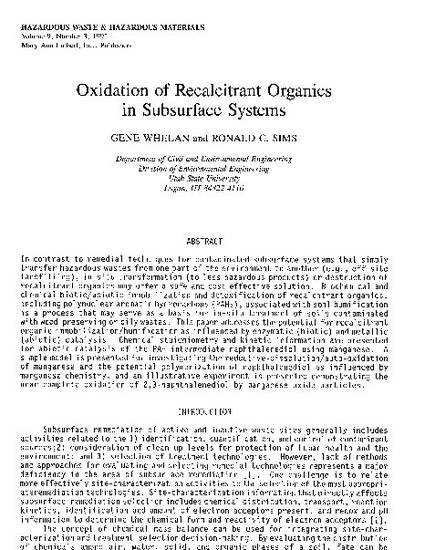
In contrast to remedial techniques for contaminated subsurface systems that simply transfer hazardous wastes from one part of the environment to another (e.g., off-site landfilling), in-situ transformation (to less hazardous products) or destruction of recalcitrant organics may offer a safe and cost effective solution. Biochemical and chemical biotic/abiotic immobilization and detoxification of recalcitrant organics, including polynuclear aromatic hydrocarbons (PAHs), associated with soil humification is a process that may serve as a basis for in-situ treatment of soils contaminated with wood-preserving or oily wastes. This paper addresses the potential for recalcitrant organic immobilization/humification as influenced by enzymatic (biotic) and metallic (abiotic) catalysis. Chemical stoichiometry and kinetic information are presented for abiotic catalysis of the PAH intermediate naphthalenediol using manganese. A simple model is presented for investigating the reductive-dissolution/auto-oxidation of manganese and the potential polymerization of naphthalenediol as influenced by manganese chemistry, and an illustrative experiment is presented demonstrating the near complete oxidation of 2,3-naphthalenediol by manganese oxide particles.
Available at: http://works.bepress.com/ronald_sims/46/

This article's copyright is owned by Mary Ann Liebert, Inc. (http://www.liebertpub.com/), and it is posted here with permission of the publisher.